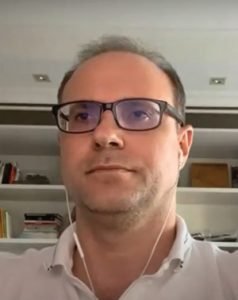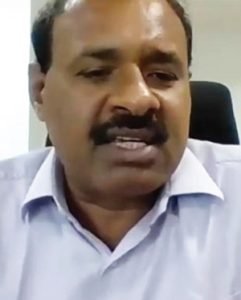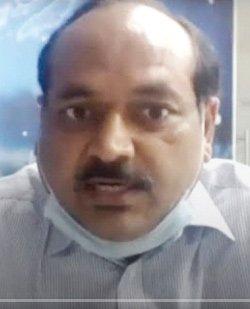COVID-19 Green Label
 According to Gerald Ollivier, Lead Transport Specialist at the World Bank, our response in the coming months will define the next decade of public transport, a large ecosystem with a number of STUs and also several private operators.
According to Gerald Ollivier, Lead Transport Specialist at the World Bank, our response in the coming months will define the next decade of public transport, a large ecosystem with a number of STUs and also several private operators.
Speaking on the need of a COVID-19 green label, he said that this voluntary certifying process to qualify transport operators who meet certain criteria, would allow them to communicate that they are taking the right steps to ensure safety. This will help build public trust and renew confidence amongst commuters. It would apply to all three sectors viz. public transport like government and private buses, intermediate public transport like auto rickshaws, and app based taxi operators.
The 5 step Approach to the COVID- 19 Green label certification:
• Prepare – Create SOPs for all three sectors, and develop training modules
• Certify – Ensure operators’ due diligence, capacity building with third party review
• Monitor – fortnightly renewal of label with internal and external reviewing
• Rebuild trust – Digital platform for passengers to raise concerns with operators
• Reward – Support operators who comply
Highlighting the shift to digital ticketing, he said it can reduce the high transmission risk by reducing contact, and also help trace passengers. In the long term, this shift will be a customer centric initiative to improve public transport mode share, optimize operational efficiency and enable strategic planning. The recommendations Gerald gave are App agnostic QR codes on tickets for the short term; mobile tickets and passes on an app, and closed loop cards for the medium term; and open loop cards for the long term.
Financing Public Transport
Shreya Gadepalli noted that cities of a population of one million can get USD 10 million (around INR 70 crores) annually from parking charges. Cities like Bangalore and Chennai can get 100 million dollars every year that can ensure public transport is affordable. London has recently increased its congestion pricing charge in a move to reduce congestion. While selfsufficiency has to be brought at the city level, it has to be also supported from the state and national levels.
 Juergen Baumann, Project Director, SMART- SUT, GIZ added that with the lockdown in Indian cities starting to ease and public transport resuming in urban areas, there is a challenge for cities to provide reliable transport and ensure safety. In India, public transport will be the most preferred mode, but the questions are : Do you get sufficient information about the expected demand for transport services? Can you provide sufficient staff at the bus stops to ensure that there are no conflicts if the bus cannot take on more passengers?
Juergen Baumann, Project Director, SMART- SUT, GIZ added that with the lockdown in Indian cities starting to ease and public transport resuming in urban areas, there is a challenge for cities to provide reliable transport and ensure safety. In India, public transport will be the most preferred mode, but the questions are : Do you get sufficient information about the expected demand for transport services? Can you provide sufficient staff at the bus stops to ensure that there are no conflicts if the bus cannot take on more passengers?
Addressing these issues, Shikha stated that congestion and parking fees would be enough to take care of the needs of the STUs. Chennai Unified Metropolitan Transport Authority (CUMTA) and Bangalore Metropolitan Land Transport Authority (BMLTA) can consider this. Many people use smartphones nowadays to access essentials and digital payment is the way to ensure total contactless travel. BMTC has not hiked fares for digital passes and is in fact working to make it more affordable. The move to digital solutions will also help people check the availability of seats on buses as well as the estimated waiting time, and thereby manage overcrowding.
 Throwing light on what is happening in Tamil Nadu, Dharmendra Pratap Yadav, Principal Secretary, Tamil Nadu Transport Department, shared that the Tamil Nadu government has mandated hand sanitizers, masks in buses, and the disinfection of buses, along with increasing the number of buses. Daily coupons with QR codes was a viable short term solution. For the long term, he suggested dividing the e-ticketing into hardware and software and procuring the hardware immediately. He added that transport departments are negotiating with banks to create transport funds at cheaper rates which will be useful, and that the government will not give immediate support to private operators when public transport is affected. Contracting private buses will be considered if there is an insufficient capacity of buses while opening up fully. STUs pay Rs.5000 crores to Original Equipment Manufacturers through subsidies and concessions in addition to paying a lot of taxes like GST and cess on diesel – and it would be good to recover this money. OEMs need concessions because they provide employment. Also, there are issues like pollution and congestion which need to be addressed.
Throwing light on what is happening in Tamil Nadu, Dharmendra Pratap Yadav, Principal Secretary, Tamil Nadu Transport Department, shared that the Tamil Nadu government has mandated hand sanitizers, masks in buses, and the disinfection of buses, along with increasing the number of buses. Daily coupons with QR codes was a viable short term solution. For the long term, he suggested dividing the e-ticketing into hardware and software and procuring the hardware immediately. He added that transport departments are negotiating with banks to create transport funds at cheaper rates which will be useful, and that the government will not give immediate support to private operators when public transport is affected. Contracting private buses will be considered if there is an insufficient capacity of buses while opening up fully. STUs pay Rs.5000 crores to Original Equipment Manufacturers through subsidies and concessions in addition to paying a lot of taxes like GST and cess on diesel – and it would be good to recover this money. OEMs need concessions because they provide employment. Also, there are issues like pollution and congestion which need to be addressed.
Also, Tamil Nadu is trying to push for Bus Priority Lanes that will be able to carry the same number of passengers at one-sixth of the cost of metro or other rail transport.
Mr. Gerald Ollivier shared that the World Bank is currently providing two kinds of fast-tracked support systems. The first, for Health systems, amounting to a billion dollars to be disbursed over three months to scale up testing, build isolation wards and to look at infection prevention and control. The second, for Social Protection, providing a billion dollars in two phases for the migrant and lower-income groups through food benefits and cash transfers.
He said the crisis could also be an opportunity to make the system more efficient, and initiatives like Bus Priority Lanes are a great way to reduce the cost per kilometer and redirect the money saved.
 Going Digital
Going Digital
Sandeep Raizada, General Manager, DIMTS stated that the need of the hour is to go digital with apps for payment, tracking of buses, and information on the availability of seats considering the shortage in supply of transportation seats for the public. DIMTS has created an app which shows the availability of seats, will allow digital payment and ticketing, and will also have the option of QR codes. In Delhi, the government has a budget for public transport and has been fully supporting all the initiatives.
 TrafficInfraTech Magazine Linking People Places & Progress
TrafficInfraTech Magazine Linking People Places & Progress